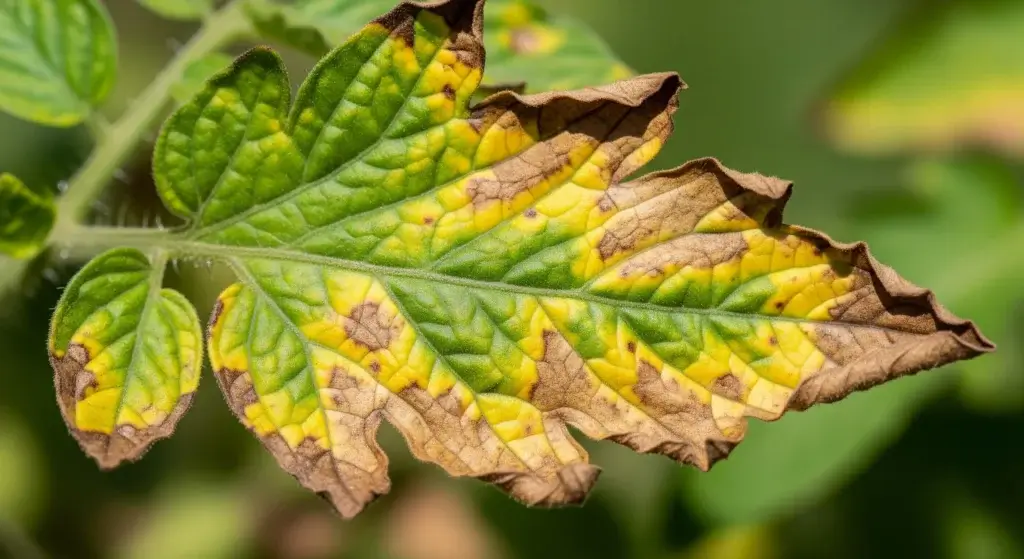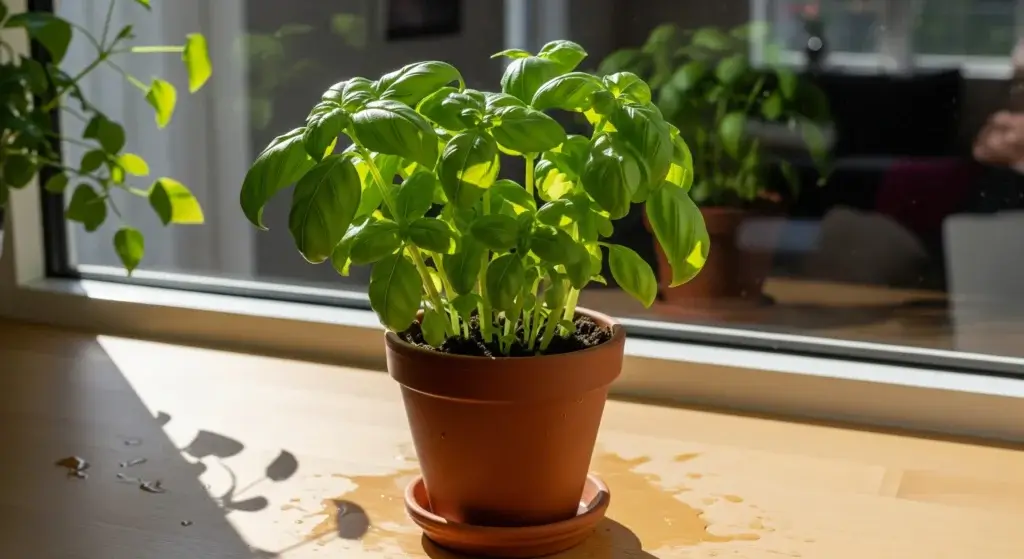
Aloe vera is basically the low-drama bestie of the plant world.
It doesn’t need much—just some sun, a little water, and good vibes.
But if it’s turning brown, squishy, or looking like it binge-watched a sad Netflix series, something’s off.
Don’t panic! Even if your aloe looks like it’s halfway to plant heaven, there’s still time to turn things around.
This guide spills the tea on what’s hurting your spiky green buddy—and how to fix it fast.
Whether you’re a plant pro or just trying not to commit succulent manslaughter, we’ve got the step-by-step glow-up plan to bring your aloe back from the brink.
Why Is My Aloe Vera Plant Dying?
Before you can save your aloe, you’ve gotta figure out why it’s being so dramatic.
Aloe vera might look tough, but even this desert diva has needs—and when those aren’t met, it starts throwing a fit.
Common signs of a dying aloe vera
- Leaves turning yellow or brown (like it forgot sunscreen)
- Squishy, mushy base (ew, plant slime!)
- Leaves curling up like they’re stressed out
- Funky smell = root rot (basically aloe B.O.)
- Weird white or black spots = pests or fungi throwing a party
Common mistakes that kill aloe vera
- Giving it too much water (it’s a succulent, not a goldfish)
- A pot with no drainage (plants hate soggy feet)
- Leaving it in total darkness or blasting it with sun 24/7
- Freezing it out—this plant does not do cold
- Using the wrong soil (it needs that dry, sandy, cactus-y stuff)
Fact: Aloe vera is a desert succulent. It stores water in its leaves and roots, which means it thrives in dry, well-drained conditions — not soggy soil.

Step-by-Step Guide to Save a Dying Aloe Vera Plant
Your aloe’s not dead — it’s just having a full-blown meltdown. Here’s how to bring it back from the brink like a plant whisperer (or, you know, a plant paramedic).
Step 1: Diagnose the problem
First, channel your inner Sherlock Holmes and look for clues:
- Are the leaves mushy like a banana left in a hot car?
- Is the soil always wet like it’s living in a swamp?
- Spot any bugs throwing a rave on the leaves?
- Is it soaking up enough sunlight, or hiding in the shadows like Batman?
Pro tip: Remember the last time you watered it and how much sun it gets. That info = plant CPR.
Step 2: Remove dead or damaged leaves
Grab clean scissors (not the ones you used on your slime project) and trim off any:
- Totally brown leaves
- Mushy leaf bottoms
- Moldy or funky parts
It’s like giving your aloe a glow-up — less drama, more healing.
Step 3: Check the roots
Carefully pop the aloe out of its pot and peek at the roots:
- Healthy roots = firm and white or tan
- Rotten roots = black, mushy, and smell like plant armpits
If it’s got root rot, snip those nasty roots with sterilized scissors and let the plant chill (air-dry!) for 1–2 days. No soil, no water, just vibes.
Important: Don’t water it right after repotting unless you’re trying to recreate the Titanic.
Step 4: Repot in the right soil
Aloe wants sandy, fast-draining soil — not soggy spa mud.
Use:
- 2 parts cactus/succulent mix
- 1 part perlite or coarse sand
Also: That pot better have drainage holes, or it’s aloe-ver.
Step 5: Water only when needed
Overwatering is basically plant sabotage. Aloe wants a dry spa day between drinks.
How to water like a boss:
- Let the soil dry completely before watering again
- Water every 2–3 weeks (even less if it’s cold)
- “Soak and dry” = full drink, then full dry-out
Never let it sit in a puddle. That’s not hydration. That’s drowning.
Step 6: Give it proper sunlight
Aloe loves the sun — but not too much sun. Think chill beach day, not Death Valley.
Best light setup:
- 6–8 hours of bright, indirect sunlight
- East or south window = chef’s kiss
- Avoid scorching midday rays (crispy aloe = sad aloe)
- Winter = maybe add a grow light for bonus glow
Step 7: Monitor for pests
If you see creepy crawlies (aphids, mealybugs, spider mites), give your plant a mini spa day:
- Mix 1 part rubbing alcohol with 3 parts water
- Gently wipe leaves
- Or use a gentle insecticidal soap — no harsh stuff!

Quick Fixes for Specific Aloe Problems
| Symptom | Likely Cause | Solution |
| Brown tips | Underwatering or too much sun |
Adjust watering and move to indirect light
|
| Mushy base | Overwatering/root rot |
Cut affected parts and repot
|
| Yellow leaves | Poor drainage or overwatering |
Improve soil and reduce watering
|
| Thin, curled leaves | Underwatering or low light |
Increase water slightly and provide more sun
|
Bonus Tips to Keep Your Aloe Vera Thriving
You’ve brought your aloe back from the edge — now let’s keep it glowing like Beyoncé at the Grammys:
- Spin me right round: Rotate your plant every few days so it gets light on all sides. No one likes a lopsided glow-up.
- Skip the fertilizer frenzy: Only fertilize twice a year — max. Aloe doesn’t need energy drinks, just a light snack now and then (use cactus/succulent fertilizer).
- Kick out the clingy babies: Remove baby aloe shoots (a.k.a. “pups”) so mama plant doesn’t get crowded or cranky.
- Wipe that dust, queen: Gently clean leaves with a soft cloth — dusty plants can’t photosynthesize properly. Think of it like skincare for succulents.
- No frostbite, please: Bring it indoors if temps drop below 10°C (50°F). Aloe hates the cold more than you hate math class on a Monday.
When Is It Too Late to Save Your Aloe?
Okay, tough talk time: If your aloe has zero healthy leaves and roots, it might be RIP time.
But wait — if even one green leaf or root is hanging in there, you’ve still got a shot at aloe greatness!
Try this:
- Cut off a healthy leaf
- Let it dry for 1–2 days (it needs to callus over, like a warrior prepping for battle)
- Replant it in dry, well-draining soil and wait for the magic to happen
Fun fact: A 2021 study in the Journal of Horticulture found aloe vera can bounce back strong when it gets the right combo of light, water, and soil.
Basically, it’s a plant with main-character energy.

Final Thoughts: Aloe There, Don’t Give Up Yet!
Just because your aloe looks a little crispy or squishy doesn’t mean it’s doomed. With a bit of TLC (and zero plant drama), you can totally bring it back from the brink.
Think of it as a plant comeback story — like a botanical version of a makeover montage in a teen movie.
Whether you’re keeping aloe for the vibes or that legendary sunburn-soothing gel, remember this:
Don’t drown it, let it breathe, and give it a sunny spot to shine. Aloe’s not clingy — it just wants space, some sun, and chill vibes.



